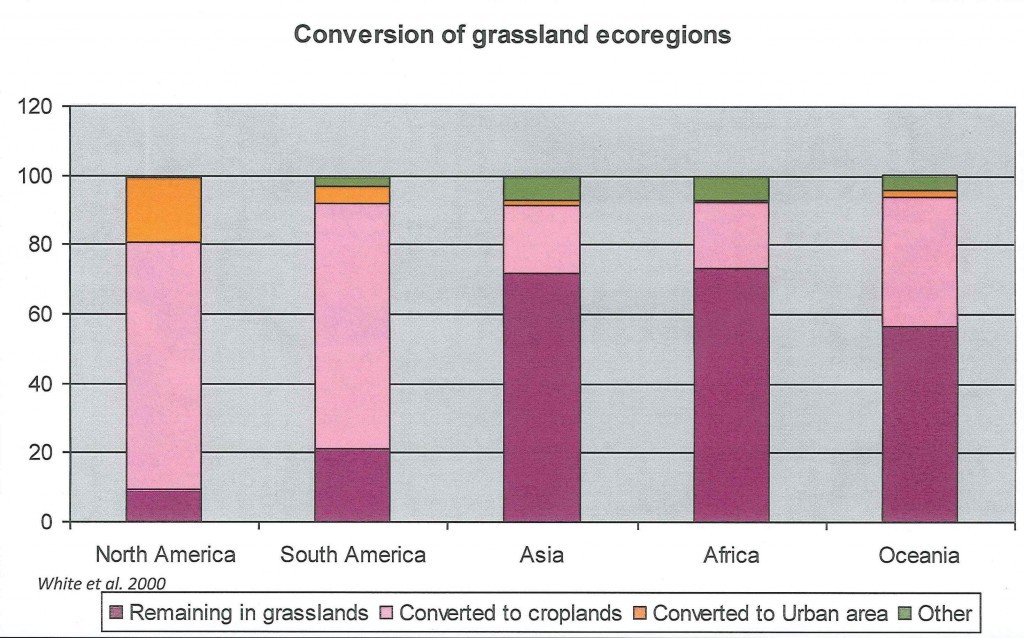Constance Neely, a Holistic Management Certified Educator who also works for the World Agroforestry Centre in Nairobi, Kenya and consults for the Food and Agriculture Organization of the United Nation (FAO), wrote recently about the need to look at livestock as a vehicle to provide livelihoods for the earth's population that is hardest hit by climate change and desertification. This land degradation comes at the cost of $42 billion USD of income that is lost every year. One billion people depend on livestock and the majority of the world’s poorest depend on livestock for at least a portion of their livelihood.
But we are losing grasslands both to other uses like crop production at an alarming rate (see graph below) as well as production of those grasslands because of desertification. In fact, grazing-induced desertification in drylands has been estimated to emit as much as 100 million tons of CO/year.
What is the Cost? If we look at the investment:benefit ratio of mitigation measures we see that improved grazing land management has the second highest technical potential for mitigating emissions. With planned grazing you can promote carbon sequestration through deep rooted perennial species and full ground cover while also addressing a host of other issues related to the ecosystem processes. Given that drylands store approximately 46% of the global carbon share, and the carbon gap that has been created by degradation, the ability to improve these soils holds great potential. Focus on Livelihoods Dr. Neely notes that while we got excited about carbon credits and went running off in that direction, the take home message is really about improving people’s livelihoods so we need to keep food security and poverty alleviation as the main aim. Livestock are and will continue to be an irreplaceable source of livelihoods for the poor, and pastoralism remains perhaps the most rational strategy for marginal areas. The associated co-benefits (increased soil organic matter, productivity, water capture and retention, and biological diversity) provide vital adaptation strategies. So the question remains, “Will climate change be the ultimate incentive to do what we have meant to be doing all along?” Let’s hope so. To learn more about these issues and how Holistic Management is helping to improve land and livelihoods, subscribe to HMI's IN PRACTICE journal at: https://holisticmanagement.org/in-practice-journal/

